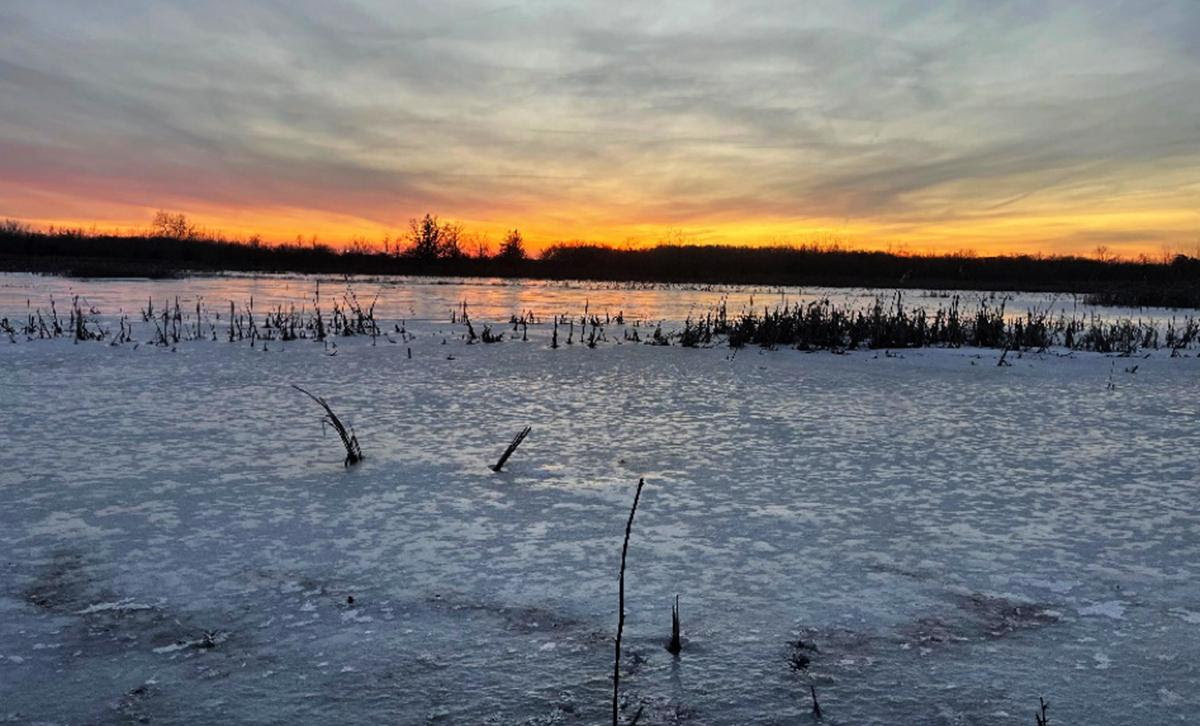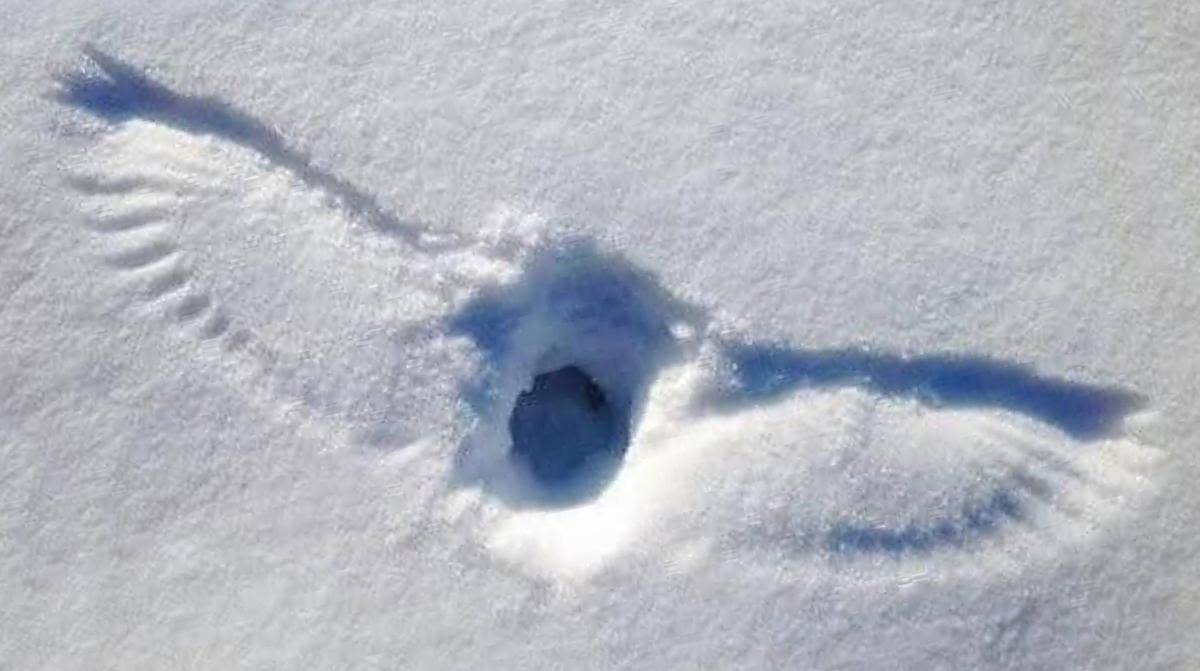LOGAN DUNN
Assistant Resource Manager

If you’ve ever walked around a wetland during the winter, you might have discovered the wonders of an ice-covered pool, and tried to imagine what lies below. Wetlands, once teeming with never-ending life, may seem to have just come to a halt during the wintery season. You begin to crunch through the snow and notice a variety of wildlife tracks, and you may hear the muffled sounds of hungry birds feeding off the berries of various trees and shrubs surrounding the wetland.
A wetland is considered an ecosystem, which is a unique system that works cohesively with the landscape, flora and fauna, and weather. The ecosystem services are those benefits that we and the environment derive from these ecosystems, such as flood mitigation, carbon sequestration, wildlife habitat, aesthetic beauty and so much more. During winter, the wetland takes on a whole different approach than of that during spring, summer and fall. Winter brings waterfowl like ducks, swans and Canada geese to frequent these wetlands, where they can restore lost energy reserves from migration by feeding on the various plants and insects that are available to them. This aids in their ability to store up energy reserves to fight off dramatic shifts in temperature and climate conditions.
Insects that are found throughout the year, like the dragonfly nymphs and predatory beetles, are still there in winter, often taking a pause in their life cycle through one stage or another. Emergent plants, those found on the surface of the water or on the fringe of the wetland, lie dormant awaiting the warmer temperatures of spring, when they will germinate once more. Wildlife frequent these areas too, as they forage for food and places to rest. Often, you can see the tracks of such activity in or near the wetland itself. If you are lucky enough, you might see an imprint that depicts the recent presence of a bird of prey seeking it’s next meal.

